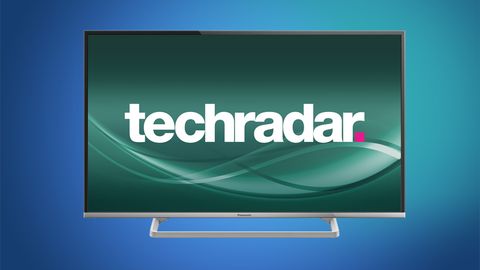Why you can trust TechRadar
There are a few picture modes available on the TX-42AS600, including true cinema and a custom mode that can store the product of tweaks to gamma, white balance and a colour management suite, though for a quick fix the cinema setting is a good basis.
An early giveaway that this is a regular LED panel rather than anything special comes from the net between Andy Murray and David Goffin at Wimbledon on BBC Two HD. Shimmering as the camera slowly pans left and right to keep the ball in shot, it's indicative of a panel that doesn't have the fastest response times.

The 100Hz backlight scanning used by the TX-42AS600 does reduce the issue to being easily bearable during this HD broadcast, but the problem is a lot more of an issue when watching standard definition channels. A close-up pan during The Big Bang Theory is visibly stepped and lacks the fluidity that a really good panel – and especially one with some frame interpolation circuitry – would bring.
That's not on offer here, and it's an issue underlined by a USA Vs Portugal World Cup match, which features the same image lag as the camera pans on BBC One, but on the HD broadcast appears more fluid. On neither broadcast did I notice much blur or resolution loss, though the TX-42AS600 certainly doesn't offer the ultimate in sharpness.

If standard definition is stained by lag and appears very soft, at least it's reasonably clean without the need to engage either the set's noise reduction or MPEG noise reduction options.
With The Wonders of the Universe playing on Blu-ray playing, the TX-42AS600 immediately shows its skill with colour, though that image lag is still apparent, and so is an innate lack of contrast (it doesn't compare to the IPS LED panel found in the brand's smaller and cheaper TX-32A400).

However, mixed brightness scenes can still impress. A sequence where Brian Cox sits in a dark hut with bright sunshine streaming through the windows is coped with well, with just enough detail apparent in both the jet-black and bright white areas of the image. It's best if the ambient light sensor is switched-off; doing so always seems to take the brightness down a touch whatever the light conditions of the viewing room.
If you want proof of exactly how average the panel inside the TX-42AS600 is, just watch from the wings and you'll notice both colour and contrast drain from the screen. I also noticed issues with the LED panel's uniformity in the form of striping - light from the edge-mounted LEDs isn't being evenly distributed.
Jamie is a freelance tech, travel and space journalist based in the UK. He’s been writing regularly for Techradar since it was launched in 2008 and also writes regularly for Forbes, The Telegraph, the South China Morning Post, Sky & Telescope and the Sky At Night magazine as well as other Future titles T3, Digital Camera World, All About Space and Space.com. He also edits two of his own websites, TravGear.com and WhenIsTheNextEclipse.com that reflect his obsession with travel gear and solar eclipse travel. He is the author of A Stargazing Program For Beginners (Springer, 2015),


